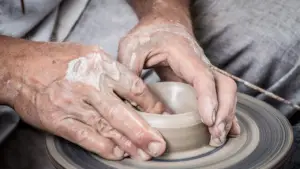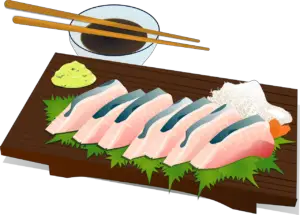Are you a whisky enthusiast looking for something new to try? Look no further than Japanese whisky. While often overshadowed by its Scottish and American counterparts, Japanese whisky has been gaining recognition in recent years for its unique flavors and high quality.
In this article, we will take a deep dive into the world of Japanese whisky, exploring the history, distilleries, production process, flavors, food pairings, collecting, cocktails, and where to buy and try this beloved spirit.
First, let’s start with a brief history lesson. Japanese whisky has its roots in the early 20th century, when several entrepreneurs sought to create a domestic version of Scotland’s famous drink. The first distillery, Yamazaki, was established in 1923, and others quickly followed suit. Despite a brief hiatus during World War II, Japanese whisky continued to grow in popularity, and today it is widely regarded as some of the best whisky in the world.
With a focus on precision, innovation, and attention to detail, Japanese distillers have created a unique style that stands out from the rest. So, let’s dive in and explore what makes Japanese whisky so special.
Key Takeaways
- Japanese whisky production involves selecting the finest malted barley, mashing and fermenting it to create the base for the whisky.
- Each distillery has its own way of creating a distinct flavor that appeals to whisky enthusiasts around the world.
- Pairing Japanese whisky with food can enhance the overall taste experience, and collecting Japanese whisky can be a rewarding and exciting hobby.
- Japanese whisky is gaining recognition for its unique flavors and high quality, and is widely regarded as some of the best whisky in the world.
A Brief History of Japanese Whisky
The development of Japanese whisky can be traced back to the early 20th century. The founder of the country’s first distillery, Masataka Taketsuru, studied the art of whisky-making in Scotland. Taketsuru returned to Japan in 1920 and began working for a company that would later become Suntory. However, he eventually left to start his own distillery, which would become Nikka Whisky.
Taketsuru’s passion for whisky-making and his dedication to creating a product that rivaled the best Scottish whiskies led to the establishment of several other distilleries in Japan. Today, Japanese whisky is known for its unique flavor profile, which is often described as being lighter and more delicate than Scotch whisky.
The history of Japanese whisky is a fascinating one, and it’s worth exploring the different distilleries and flavors that have emerged over the years.
The Distilleries of Japan
Exploring Japan’s various distilleries reveals a rich history of whisky-making and a diverse range of unique blends. The country’s whisky industry began in the early 20th century when Masataka Taketsuru, a young chemistry graduate, traveled to Scotland to learn the art of whisky-making. He returned to Japan and founded the country’s first distillery, Yamazaki, in 1923.
Today, Japan is home to over a dozen distilleries, each with its own distinct style and flavor. One of the most well-known distilleries is Nikka, founded by Taketsuru in 1934. Nikka produces a range of award-winning whiskies, including the Taketsuru Pure Malt, named after the founder himself.
Another popular distillery is Suntory, which operates the Yamazaki and Hakushu distilleries. The Yamazaki 18 Year Old Single Malt, aged in a combination of American, Spanish, and Japanese oak casks, is considered one of the world’s best whiskies.
Other notable distilleries include Chichibu, which produces small-batch whiskies using locally grown barley, and Mars Shinshu, which is located in the Japanese Alps and produces a range of unique and complex whiskies.
The Production Process
As you delve deeper into Japan’s whisky culture, you’ll discover the intricate and precise production process that goes into crafting each unique blend.
The process begins with selecting the finest malted barley, which is then mashed and fermented to create the base for the whisky.
This base is then distilled in a traditional pot still, where the alcohol is separated from the water and other impurities to create a pure, high-quality spirit.
Once the spirit has been distilled, it is transferred to oak barrels for maturation. Japanese whisky distilleries often use a variety of barrels, including American oak, Spanish oak, and Mizunara oak, which is a rare and highly prized type of Japanese oak.
The whisky is left to mature for several years, during which time it takes on the flavors and aromas of the oak, as well as the climate and environment in which it is stored.
The result is a complex and nuanced whisky that is truly unique to each distillery.
The Unique Flavors of Japanese Whisky
Delving into Japan’s whisky culture reveals a distinct taste palette that is both complex and nuanced, owing to the variety of oak barrels and unique maturation process. Each distillery has its own signature flavor profile, making Japanese whisky stand out in the international market. Here is a breakdown of the unique flavors that can be found in some of Japan’s most popular distilleries:
| Distillery | Flavor Profile | Notable Whiskies |
|---|---|---|
| Yamazaki | Fruity, floral, and spicy | Yamazaki 12 Year and Yamazaki 18 Year |
| Hakushu | Smoky and herbal | Hakushu 12 Year and Hakushu 18 Year |
| Nikka | Honey, vanilla, and nutty | Nikka Taketsuru Pure Malt and Nikka Coffey Grain |
| Chichibu | Peaty and earthy | Chichibu The Peated and Chichibu The Floor Malted |
Japanese whisky’s unique flavors can be attributed to the country’s varied climate, different types of oak barrels used for maturation, and the blending of different whiskies to create a final product. Each distillery has its own way of creating a distinct flavor that appeals to whisky enthusiasts around the world. Whether you prefer a fruity, floral taste or a smoky, peaty finish, Japanese whisky has something for everyone.
Pairing Japanese Whisky with Food
Pairing Japanese whisky with food can enhance the overall taste experience by bringing out the different notes and flavors in both the food and the whisky. Japanese whisky is known for its delicate and complex flavors that range from fruity to smoky, making it an ideal drink to pair with food.
The trick to pairing Japanese whisky with food is to find the right balance and harmony between the flavors of the dish and the whisky. When it comes to pairing Japanese whisky with food, there are a few general rules of thumb to follow.
First, lighter, fruitier whiskies like Nikka Coffey Grain or Hibiki Harmony pair well with seafood dishes and salads. On the other hand, deeper, smokier whiskies like Yamazaki 12 Year or Hakushu 18 Year are better paired with grilled meats and savory dishes.
The key is to find a balance between the intensity of the dish and the whisky, so that neither overpowers the other. By experimenting with different pairings, you can discover new flavor combinations and enhance your overall whisky and dining experience.
Collecting Japanese Whisky
If you’re a whisky lover looking to expand your collection, collecting Japanese whisky can be a rewarding and exciting pursuit. Japan has a rich whisky culture that’s been growing since the first distillery opened in the 1920s. Today, Japanese whisky is known for its exceptional quality and unique flavors, making it a highly sought-after commodity in the whisky world.
When collecting Japanese whisky, it’s important to keep in mind that there are a limited number of distilleries in Japan, and each one produces a distinct flavor profile. Some of the most popular distilleries include Yamazaki, Hakushu, and Yoichi. Each of these distilleries has its own unique style and flavor profile, so it’s important to try a variety of whiskies from different distilleries to find your favorites.
Additionally, Japanese whisky can be quite expensive, so it’s important to research and invest wisely in your collection. Overall, collecting Japanese whisky can be a rewarding and exciting hobby for any whisky enthusiast looking to explore new flavors and expand their collection.
Cocktails and Mixology with Japanese Whisky
Now that you’ve learned about collecting Japanese whisky, it’s time to explore another aspect of this highly sought-after liquor: cocktails and mixology.
Japanese whisky’s unique flavor profile makes it a versatile ingredient in various cocktails, whether you prefer fruity, sweet, or bold flavors.
One popular Japanese whisky cocktail is the Highball, a refreshing drink made with whisky and soda water. This drink originated in Japan and has become a staple in bars all over the world. The key to a great Highball is to use high-quality Japanese whisky that can stand up to the bubbles and add a twist of citrus for a tangy finish.
Another classic cocktail that can be made with Japanese whisky is the Old Fashioned. Swap out the American bourbon for a Japanese whisky, and you’ll get a drink with a more complex and nuanced flavor. The Japanese whisky’s notes of honey, vanilla, and oak play well with the bitters, sugar, and orange peel in the Old Fashioned.
In addition to these classic cocktails, mixologists are constantly inventing new and exciting drinks that showcase Japanese whisky’s unique flavors. From fruity and floral concoctions to bold and smoky drinks, there is a Japanese whisky cocktail for every taste.
Whether you’re a seasoned bartender or just a curious enthusiast, experimenting with Japanese whisky in your cocktails is a fun and delicious way to discover the many nuances of this impressive spirit.
Where to Buy and Try Japanese Whisky
Discover the best places to get your hands on and indulge in the smooth, rich taste of Japanese whisky. Whether you’re a seasoned whisky drinker or a curious newcomer, there are numerous options available to try and purchase Japanese whisky. Here are some of the best places to explore:
-
Liquor Stores: Local liquor stores are a great starting point for finding Japanese whisky. Many stores carry a wide selection of Japanese whisky, including rare and limited edition bottles. Look for stores that specialize in whisky or have a knowledgeable staff to help guide your selection.
-
Bars and Restaurants: Japanese whisky has gained popularity in recent years, and many bars and restaurants now offer it on their menus. This is a great way to try different brands and expressions before committing to a full bottle purchase. Look for bars with a focus on whisky or those that specialize in Japanese cuisine.
-
Online Retailers: If you can’t find what you’re looking for locally, online retailers can be a great option. Many reputable retailers offer a range of Japanese whisky brands and expressions, and can ship directly to your door. Just be sure to check shipping restrictions and make sure the retailer is reputable.
-
Distilleries: For a truly immersive experience, consider visiting a Japanese whisky distillery. Many distilleries offer tours and tastings, giving you the opportunity to learn about the whisky-making process and try exclusive expressions not available elsewhere. Check with the distillery in advance to ensure they offer tours and tastings, and make sure to plan accordingly as some distilleries are located in remote areas.
With so many options available, there’s never been a better time to explore the world of Japanese whisky. Whether you’re looking to try new brands or add to your collection, these options provide a great starting point for your journey.
Frequently Asked Questions
What is the legal definition of Japanese whisky and how does it differ from other types of whisky?
Japanese whisky is a distinct type of whisky that has a specific legal definition. In order to be considered Japanese whisky, the product must be made in Japan using a mash of malted grains, water, and yeast, distilled at a maximum strength of 95% ABV, and aged in wooden casks for a minimum of three years. It cannot contain any additives other than water and caramel coloring.
This differs from other types of whisky, such as Scotch whisky, which has its own set of legal requirements. While both Japanese and Scotch whisky must be aged for a minimum of three years, Scotch whisky is made in Scotland using only malted barley, and must be aged in oak casks that have previously held sherry, bourbon, or other types of wine or spirits.
Overall, the legal definition of Japanese whisky sets it apart as a unique and high-quality product, with strict standards for its production and aging process.
How have Japanese distilleries adapted to environmental and economic challenges in recent years?
To answer your question about how Japanese distilleries have adapted to environmental and economic challenges in recent years, it’s important to note that the industry has faced several obstacles.
The increase in demand for Japanese whisky has led to a shortage of aged stock, resulting in price increases and limited availability.
Additionally, the 2011 earthquake and tsunami caused damage to several distilleries, further impacting production.
In response, some distilleries have focused on innovation and experimentation, creating new blends and using non-traditional barrels for aging.
Others have implemented sustainable practices, such as using renewable energy sources and reducing waste.
Overall, Japanese distilleries have shown resilience and adaptability in navigating these challenges.
What role do cultural and regional influences play in the production and flavor profiles of Japanese whisky?
To understand the role of cultural and regional influences in the production and flavor profiles of Japanese whisky, you need to delve into the history of the industry and the country itself.
Japanese whisky was heavily influenced by Scottish whisky-making techniques, but over time, distilleries developed their own unique styles and flavors. The water source, local climate, and yeast strains used in production all contribute to the final product’s taste.
Additionally, Japanese culture values precision and attention to detail, which is reflected in the meticulous crafting of each whisky. The use of Japanese oak barrels, known as mizunara, also adds a distinct flavor profile to some whiskies.
Overall, the combination of traditional whisky-making techniques with Japanese culture and natural resources creates a diverse and exceptional range of Japanese whiskies.
How do Japanese whisky makers balance tradition with innovation in their craft?
When it comes to balancing tradition with innovation in the craft of Japanese whisky, makers are constantly seeking a delicate equilibrium.
They must respect the deep-rooted traditions of whisky-making in Scotland, the birthplace of the industry, while also infusing their own distinct cultural and regional influences.
This can manifest in various ways, such as incorporating local ingredients like Japanese oak or cherry blossom into the aging process, experimenting with unique blends of malt and grain whiskies, or even utilizing cutting-edge technology to enhance the distillation process.
Ultimately, the key to successful innovation lies in striking a balance that honors the past while pushing the boundaries of what is possible in the present and future.
What are some common misconceptions about Japanese whisky and how do they compare to reality?
When it comes to Japanese whisky, there are a few common misconceptions that often arise. One of the most prevalent is that Japanese whisky is simply a copy of Scotch whisky. However, this is far from the truth. While Japanese whisky makers may have drawn inspiration from Scotch whisky, they’ve also developed their own unique techniques and flavor profiles.
Another misconception is that Japanese whisky is always expensive. While some high-end Japanese whiskies can be quite pricey, there are also a number of affordable options available. Additionally, many people believe that Japanese whisky is only for serious whisky drinkers. While it’s certainly true that Japanese whisky can offer complex and nuanced flavors, it’s also accessible to those who are just beginning to explore the world of whisky.
Overall, it’s important to remember that Japanese whisky is a distinct and fascinating category of whisky that’s well worth exploring.
Conclusion
Congratulations! You’ve just embarked on a journey into the world of Japanese whisky.
From its fascinating history to the unique flavors that make it stand out, you’ve learned all there is to know about this exceptional spirit.
You now know that Japanese whisky is more than just a copy of Scotch, but a distinct and complex drink that has become a global sensation.
You’ve also discovered the different distilleries in Japan and the production process that each one employs, giving you a deeper understanding of how the flavors are achieved.
With this knowledge, you can now explore the different Japanese whiskies available and experiment with pairing them with your favorite foods.
Whether you choose to collect Japanese whisky or enjoy it in cocktails, you can be confident in your choices with the information you’ve gained.
So, go ahead and indulge in a glass of Japanese whisky, and savor the experience!






























































































































